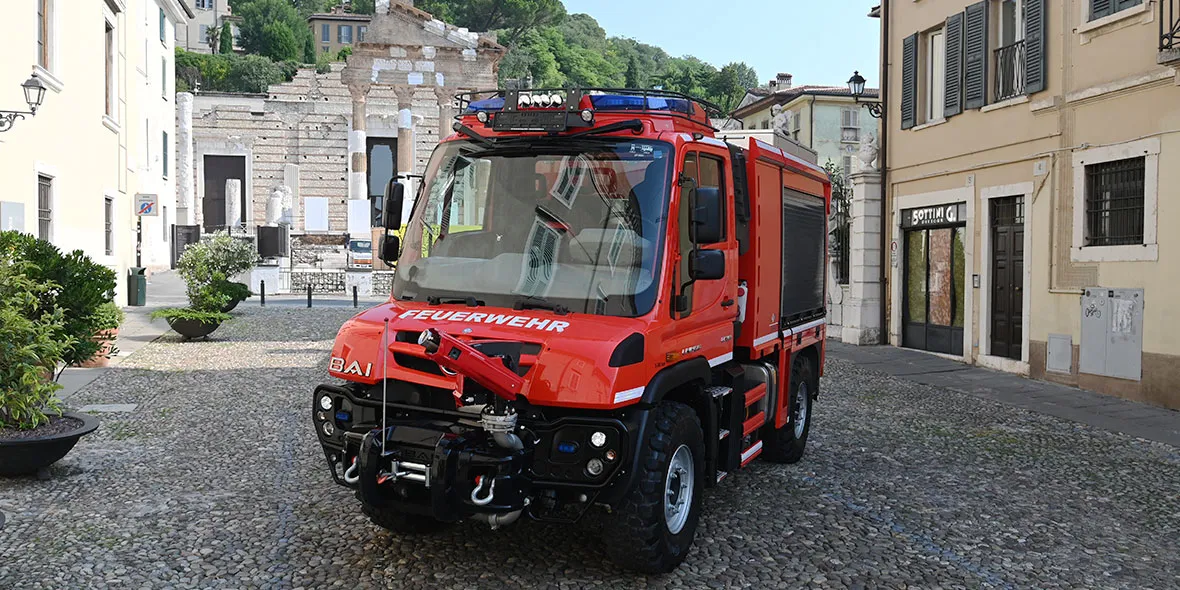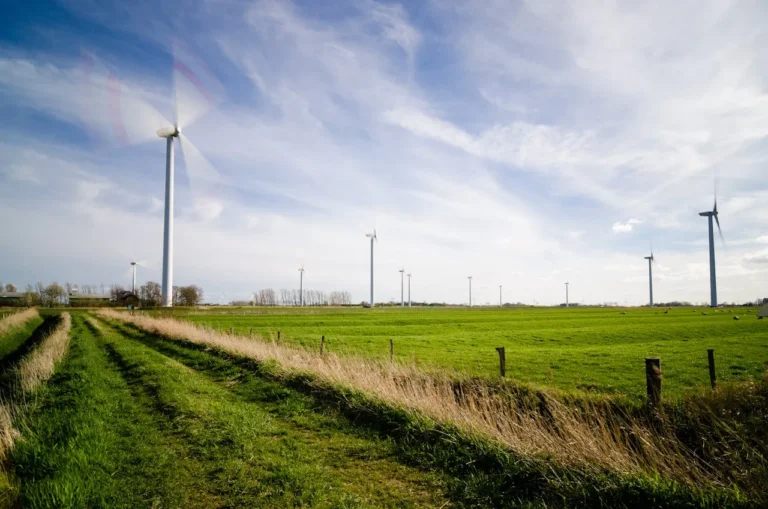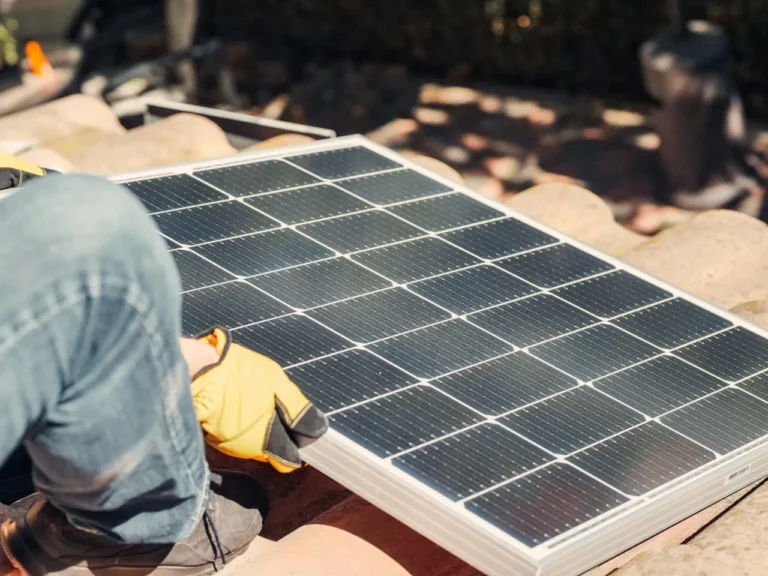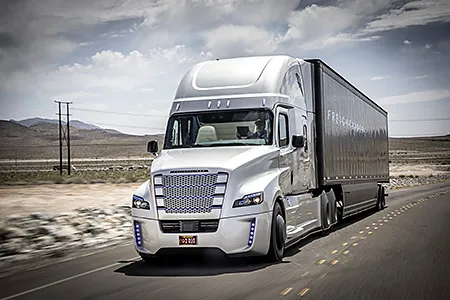
Lünen Fire Department Strengthens Emergency Capabilities with All-Terrain Unimog
The fire department in Lünen has taken a major step in boosting its emergency response capabilities with the addition of a specially equipped Unimog fire truck. Outfitted with a powerful water tank superstructure, this all-terrain vehicle has been designed to meet the wide variety of challenges that the department faces, from forest and vegetation fires to severe flooding and storm damage.
Over the past several years, climate extremes have been a recurring theme for Lünen and the wider region of Westphalia. On one side, long dry spells have significantly increased the risk of forest and vegetation fires. On the other, torrential rainfall events have repeatedly caused severe flooding across residential districts. For the fire department, this means being prepared not only for fire suppression but also for water removal, protective measures against floodwaters, and even rescue and evacuation of citizens during natural disasters.
With around 350 professional and volunteer firefighters, the Lünen fire department must respond to an exceptionally broad mission profile. The arrival of the new Unimog ensures they have a tool that matches this challenge. The vehicle’s configuration provides high fording ability, a large water tank, and even a roof hatch that allows firefighting to continue while on the move. Built to the DIN-14530-22 standard for water tenders, the vehicle was converted and customized by Schlingmann, one of Germany’s leading fire truck manufacturers.
A Vehicle for All Alert Levels: The Unimog U 5023
At the core of Lünen’s new firefighting arsenal is the Unimog U 5023, a model renowned for its rugged durability and off-road performance. The truck comes equipped with selectable all-wheel drive and differential locks as standard. Thanks to its high ground clearance, the Unimog can master forward and reverse embankment angles of more than 35 degrees.
Even with the large water tank and firefighting superstructure attached, the Unimog retains its signature flexibility. Its body mounting system allows for significant torsional freedom in the chassis, meaning the truck can traverse uneven terrain without losing stability. Onboard equipment includes 3,000 liters of extinguishing water, 120 liters of foam compound, and a full suite of specialized firefighting tools, ensuring that crews are prepared for immediate intervention.
To enhance performance in sandy or muddy environments, the TireControl Plus tire pressure regulation system can be activated at the touch of a button, adapting tire contact to the ground surface. Firefighters are also supported by an array of spray nozzles mounted under the front bumper. These allow the vehicle to drive directly across burning vegetation, either extinguishing flames at the source or spraying freshly burned ground to prevent flare-ups. For situations where the truck itself is at risk, these spray bars double as a protective shield, cooling the vehicle while it withdraws from hazardous areas.
Schlingmann Conversion: TLF 3000 VARUS
The vehicle’s transformation into a TLF 3000 VARUS firefighting truck was handled by Schlingmann. The lightweight stainless steel frame of the superstructure provides strength while accommodating a massive 3,000-liter water tank. A swivel roof hatch allows for rapid deployment of a jet pipe, letting firefighters tackle flames while the vehicle is still in motion—a vital feature for fast-spreading wildfires.
Another standout capability is the “pump and roll” function, made possible by Schlingmann’s S 3000 centrifugal fire pump (FPN 10-3000). This system enables continuous water delivery as the truck advances. For large-scale operations, a roof-mounted water cannon can discharge up to 2,000 liters per minute, offering significant suppression power.
The truck’s four side compartments house hoses, nozzles, breathing gear, generators, and other critical equipment. Additional storage in the roof box allows for transport of specialized tools. Illumination is another key consideration: LED strips built into the superstructure, ambient lighting, and a mast with eight LED headlights ensure that operations can continue effectively during nighttime emergencies or in poor visibility conditions.
A Tradition of Facing Natural Hazards
Lünen’s geography makes it particularly vulnerable to a wide spectrum of natural hazards. Situated between the Ruhr area and Münsterland, the town is surrounded by rivers, wooded landscapes, and former mining terrain. While scenic, these areas present risks that firefighters have had to contend with for centuries.
Historical records going back to the 14th century document the town’s long battle with flooding. The 20th century alone saw ten major flood events, with the Lippe and the Seseke rivers frequently overwhelming banks and spilling into urban areas. For good reason, Lünen’s medieval church was built on the highest point of the town, safe from rising waters. Today, both rivers are officially designated as “risk waters” under North Rhine-Westphalia’s flood risk management strategy.
At the same time, climate change has amplified the risk of forest fires. The Cappenberg Forest, one of the largest continuous woodland areas in Münsterland, lies just a few kilometers from the city. Home to centuries-old trees and a rich array of protected wildlife, the forest also plays a vital ecological role by regulating the region’s water balance and channeling fresh air into Lünen’s built-up neighborhoods. Protecting this valuable natural resource is one of the fire department’s most critical responsibilities.
Building on a Proven Legacy
The addition of the new Unimog U 5023 does not mean the end of older vehicles. Lünen continues to operate a Unimog U 1550L dating back to 1987, which has undergone a thorough modernization. Together, the two Unimogs form the backbone of the fire department’s off-road firefighting capability—one representing proven endurance, the other the latest in emergency response technology.
By combining tradition with innovation, the Lünen fire department is well prepared for the challenges of the future. Whether battling flames in the forest, responding to flooded streets, or managing storm damage, the department’s firefighters now have a vehicle capable of meeting almost any threat nature sends their way.




